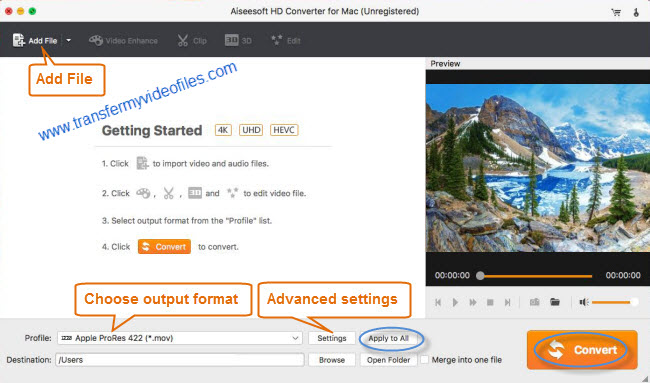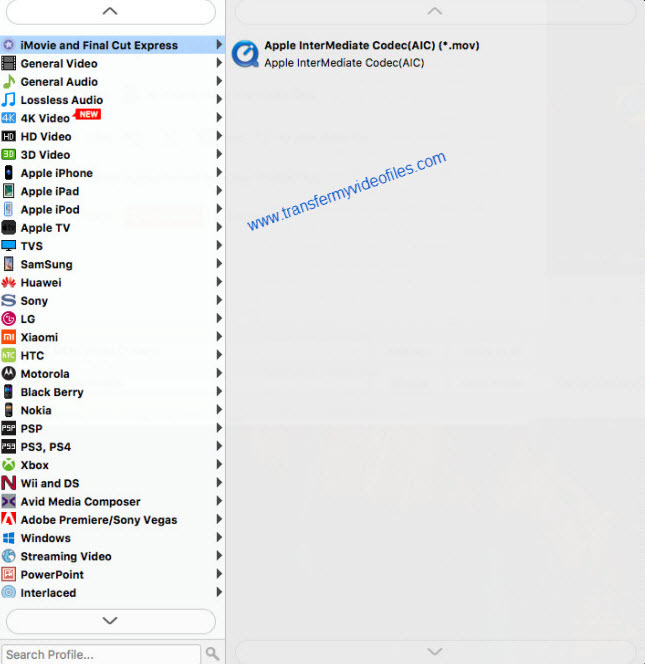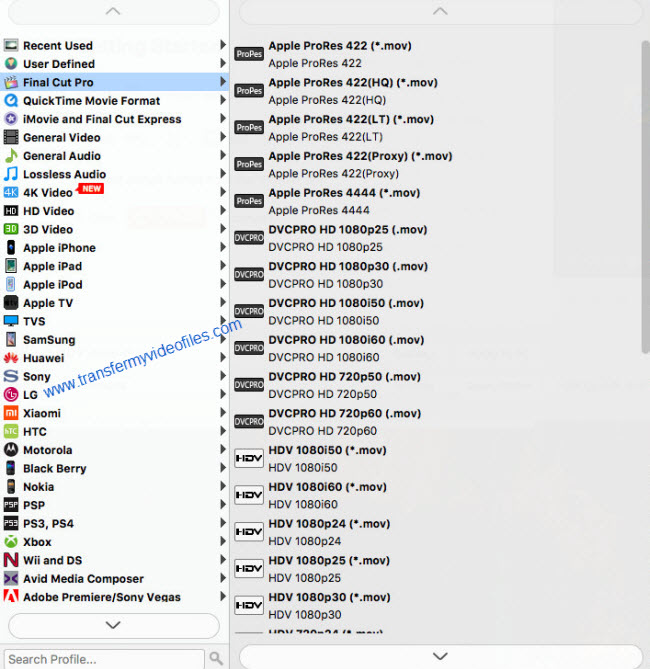For a fast and fluid Panasonic Lumix DMC-G7 workflow on Mac, users sometimes need to transcode DMC-G7 4K MP4 footage to AIC/ProRes mov for use in iMovie and FCP X. This post displays a straight forward way to process Lumix DMC-G7 4K file conversion on Mac.

The LUMIX G7 has been updated to record stunningly smooth, high-resolution QFHD 4K video in 3840×2160 at 30p or 24p in MP4 in addition to the Full-HD 1,920 x 1,080 60p video in AVCHD Progressive or MP4 (MPEG-4 / H.264) format, as well as HD and SD resolutions. Taking advantage of the 4K video recording capabilities, a trio of still shooting modes are available for recording continuous 8 MP stills at a 30 fps shooting rate on the LUMIX G7, including 4K Burst, 4K Pre-Burst and 4K Burst (S/S).
If for whatever reason you have issues working with Lumix DMC-G7 4K footage on Mac through iMovie or Final Cut Pro X, we would recommend transcoding Lumix DMC-G7 4K MP4 files to a Mac friendly format before editing. For example, you can convert Lumix DMC-G7 4K media to Apple’s InterMediate Codec for use in iMovie and transcode Lumix DMC-G7 4K video to Apple ProRes 422 for editing in FCP X. This requires third party solutions like HD Video Converter for Mac. Read on to find out a step-by-step guide talking about how to encode Lumix DMC-G7 4K MP4 footage to QuickTime format for use in iMovie and FCP X via using this Mac converter app.
About HD Video Converter for Mac
Working well as a 4K Video Converter for Mac, this app supports converting video recordings captured by major 4K cameras/camcorders, including but not limited to Panasonic Varicam 35, Panasonic Lumix FZ1000, Panasonic Lumix DMC-GH4, Panasonic Lumix DMC-CM1, Sony PDW-HD1550, Sony PXW-Z100, Sony FDR-AX1, GoPro Hero4, JVC GY-HM200, JVC GY-HM170, JVC GY-LS300 and Canon XC10.
[Guide] How to transcode Lumix DMC-G7 4K MP4 video for editing in iMovie and FCP X?
First of all, download and install HD Video Converter for Mac

Then follow these steps:
Step 1: Open up HD Video Converter for Mac as a Lumix DMC-G7 4K Converter for Mac. When its main interface comes up, click ‘Add File’ to load your source media.

Step 2: Select output format for your editing program
To convert Lumix DMC-G7 4K video for iMovie, from ‘Profile’ list, choose ‘Apple InterMediate Codec (AIC) (*.mov)’ as output format under ‘iMovie and Final Cut Express’ column. This output format is also suitable for editing in Final Cut Express.

To transcode Lumix DMC-G7 4K video files for FCP X, select ‘Apple ProRes 422 (*.mov)’ as output format under ‘Final Cut Pro’ column. The ProRes codec is also workable in its former version FCP 6 and FCP 7.

Important: If you’ve loaded a number of video clips to do batch conversion, please do remember ticking off ‘Apply to All’ option before you start.
Step 3: Custom video and audio settings (optional)
If necessary, you can click ‘Settings’ button and go to ‘Profiles Settings’ panel to modify video and audio settings like video encoder, resolution, video bit rate, frame rate, aspect ratio, audio encoder, sample rate, audio bit rate, and audio channels. 3D settings are also available.
Step 4: Begin Lumix DMC-G7 4K movies to MOV Conversion on Mac
When ready, click ‘Convert’ to start format conversion. Once the conversion process is complete, you can click ‘Open Folder’ button to get the generated AIC MOV files or ProRes MOV files for editing in iMovie or FCP X with optimum performance.
Tips:
If you don’t want to wait for the entire conversion process, you can tick off ‘Showdown computer when conversion completed’ and go away to do other things.
Related posts
Import Sony FS700 4K/2K AVCHD to Premiere and Vegas
How to import/edit Nikon 1 J5 4K/60p video in iMovie/FCPX?
Canon XC10 FCP X-edit Canon XC10 4K/Full HD Video in FCPX
JVC SP100 4K Premiere-edit JVC GW-SP100 4K H.264 in Premiere
